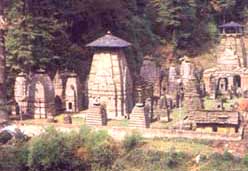The actual soil of India is thought by many to be the body, or residence of the divinity, especially in its feminine manifestation. However, this identification of the land of India with the sacred makes it unsurprising that the whole terrain of the subcontinent is covered with the habitations of the God-their temples. Despite the incursions of other religions, India is still a country of temples & shrines, and wherever you travel, the Gods of Hinduism is present.
As the temple, in its architecture, decoration & ritual, has been the primary location where Hindu art has flourished, some general information about Hindu temples is necessary.
is covered with the habitations of the God-their temples. Despite the incursions of other religions, India is still a country of temples & shrines, and wherever you travel, the Gods of Hinduism is present.
As the temple, in its architecture, decoration & ritual, has been the primary location where Hindu art has flourished, some general information about Hindu temples is necessary.
Generally speaking, temple architects used post & beam architecture without true vaulting; dry-stone construction technique was the norm with mortar rarely used. Corbelled vaulting was much more common than true vaulting, in which technique Indian temple architects excelled. Ceiling are usually constructed of flat slabs of stone laid between pillars.
The Theory of Hindu Temples
The design & construction of Hindu temples is theoretically determined by text called Shastras. The Shastras dealing with sculpture are the Shilpashastras, those concerned with architecture are the VastuShastras. A common idea found the VastuShastras is the concept that the temple should be a representation of the cosmos, symbolically and in miniature. Thus, just as cosmic diagrams (mandalas) were painted as 2-D representations of the cosmos with the
deity and the palace at the center, so the temple was regarded as a 3-D mandala, illustrating the same universe. In both the
mandala and the temple the deity occupies the centre. This central sanctuary chamber is the
Garbhgriha, literally the 'womb-chamber'. Like a king surrounded by his court, the God in the temple is surrounded by his retinue. These are arranged in decreasing order of precedence as one moves away from the image of the divinity: his consort nearest, then his mount (usually a real or mythological animal), the other, usually subsidiary, deities in his group, the deities who stand guard over the eight direction
(ashtdikpalas), the Gods of the planets (navagrahas), the saints who have lovingly laboured in the service of the God, the various local folk deities and lastly and thus farthest from the sanctury the sacred plants associated with the cult.
Continue.....



